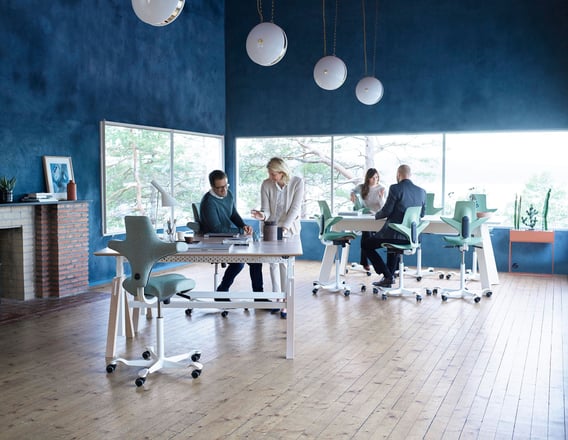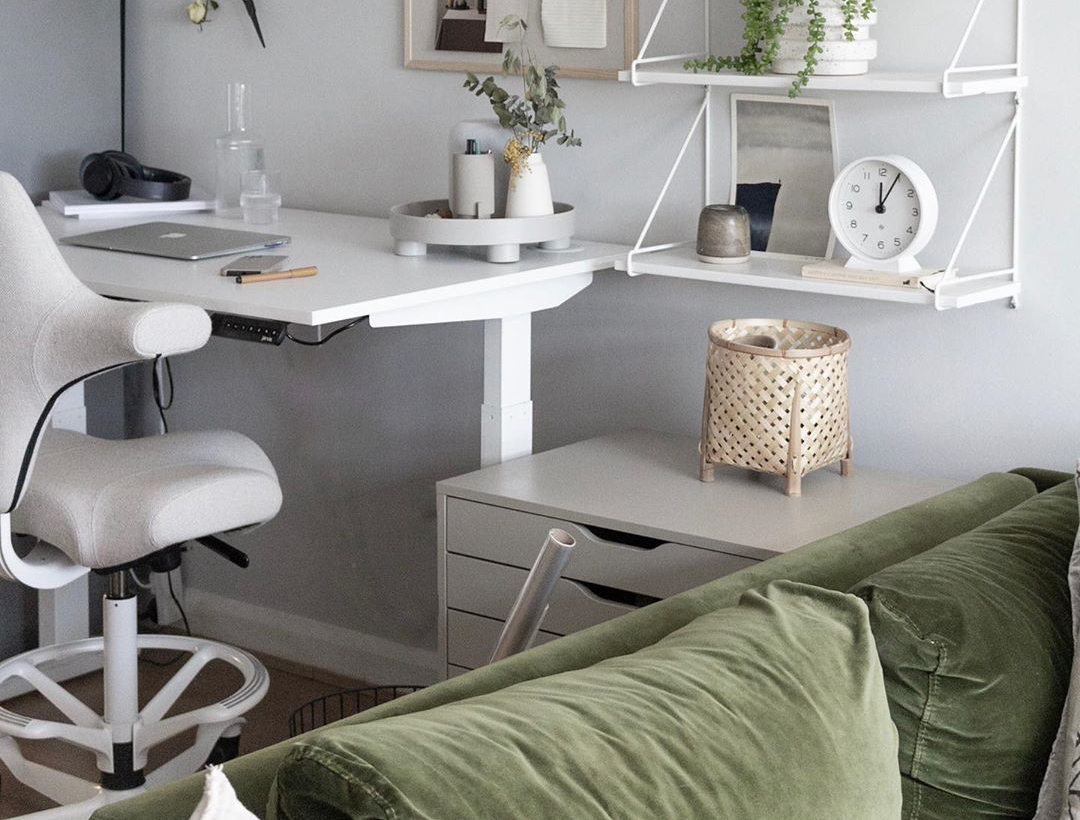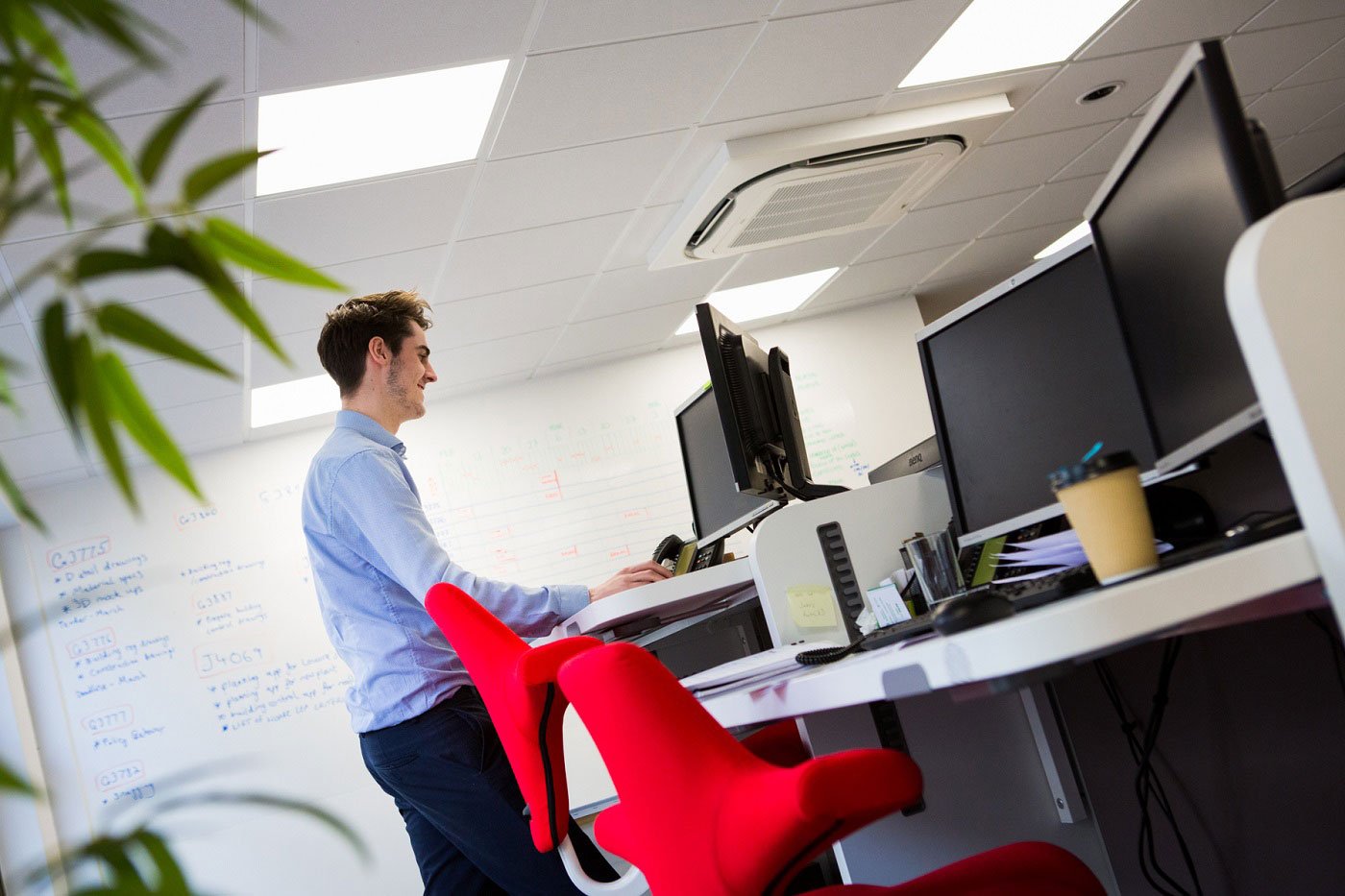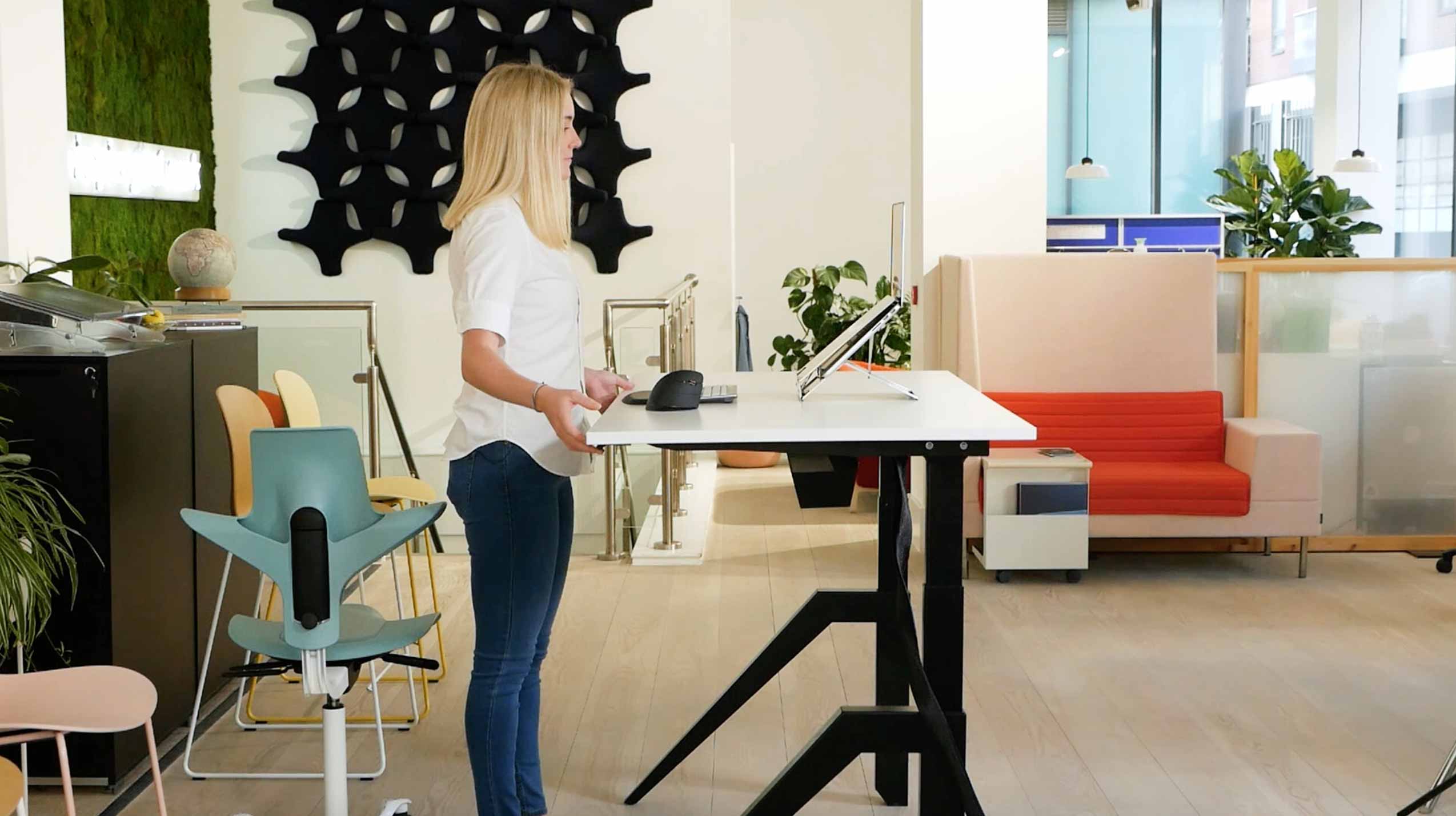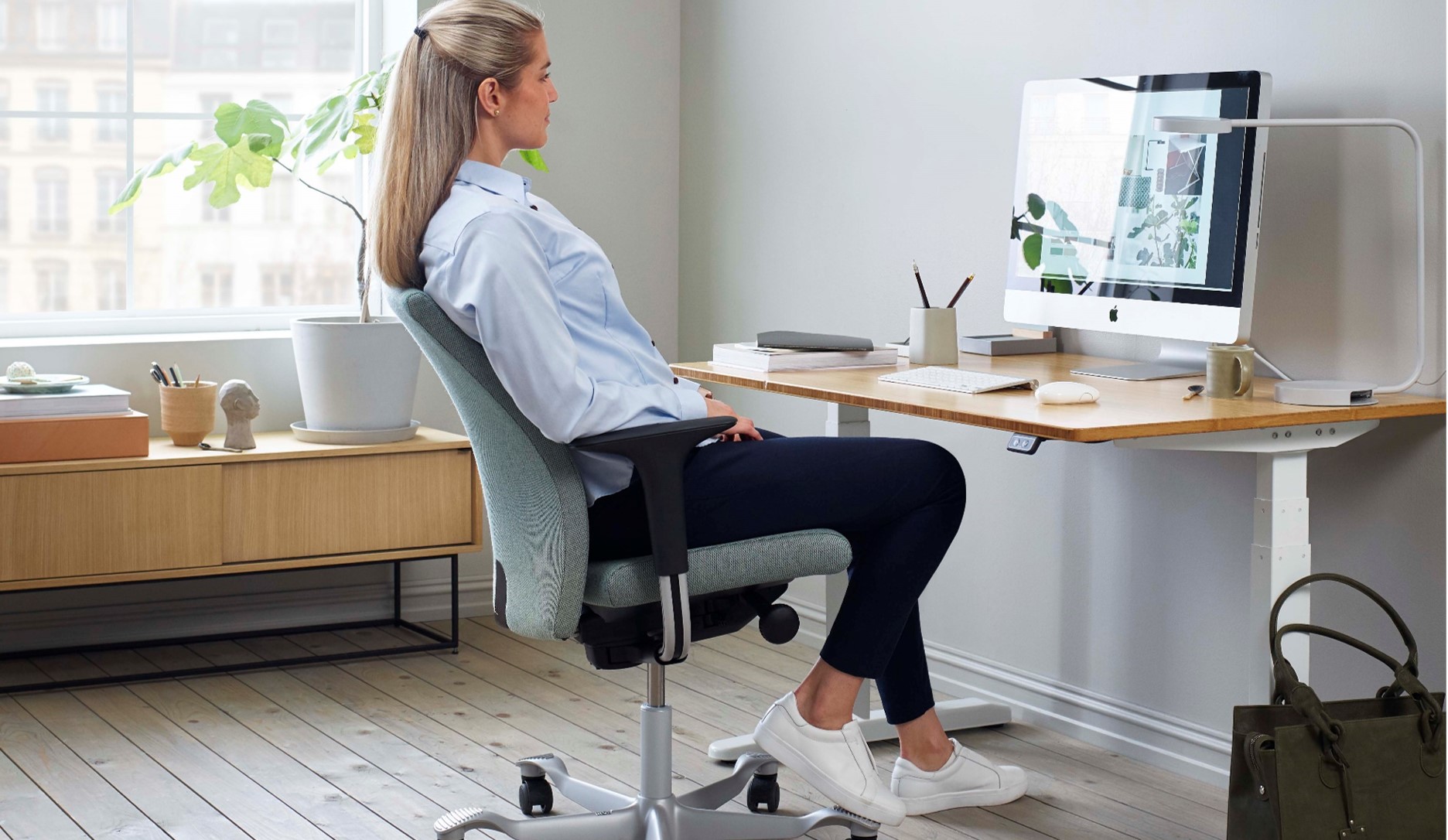Figures show that many adults (and children) spend at least 7 hours a day sitting down, with this number rising to 10 hours or more as we get older. Desk-based work is one of the biggest contributors to this, and with the recent increase in people working from home, people are spending even longer sitting down, going straight from the bed to the desk in a matter of seconds.
Take a few minutes to think about how many hours you spent sitting over the last 24 hours, it’s probably more than you care to admit.
One simple way to change this behaviour is by using a sit-stand desk in your workspace. A sit-stand desk (also known as a stand-up desk) is a workstation that allows you to alternate between sitting and standing whilst you work, elevating and lowering the desktop to allow you to work from different heights and different postures.
But what are the benefits of this way of working? And why does it matter how long you sit anyway? Let’s take a look.
It can prolong your life
The World Health Organization has identified a sedentary lifestyle as the fourth leading risk factor for global mortality. A whole range of illnesses and disorders are caused by spending too long sitting down.
By introducing sit-stand desking, and varying from sitting to standing regularly throughout the day, you can receive many health benefits, including:
- Reduced risk of obesity
- Reduced risk of some types of cancer
- Lower long-term mortality risk
- Reduced risk of cardiovascular disease
- Reduced risk of type 2 diabetes
It can boost your productivity
Contrary to what you may think, standing whilst working may actually improve your productivity. Whilst it may take getting used to, there is no evidence to suggest that your work rate takes a hit when on your feet, and the added benefits towards your wellbeing can help induce creativity, which may also help you work better. A recent study highlighted exactly this.
There are studies that show standing sometimes improves performance when compared to sitting, for tasks such as sending emails and making telephone calls.
It reduces the chance of back pain
One of the biggest causes of back pain is sedentary behaviour, especially when sat at a desk for long periods without postural changes. Back pain is also one of the biggest causes of time off work, costing the US economy alone $88 billion annually. Converting to a sit-stand desk is a great way to combat this issue.
When you adopt sit-stand desking, you are much more likely to move and change posture frequently.
Going too far the other way is can also have negative consequences. A 2018 study by Straker found that any longer than 40 minutes of continuous standing causes musculoskeletal discomfiture, suggesting that standing for too long also causes back pain.
The most important thing is that you keep your body moving, and sit-stand desks give you this opportunity, relieving any pressures on the back.
It can improve your personal wellbeing
Research has found that using stand-up desks can have a positive effect on your general wellbeing. Participants in various studies have expressed feeling less stressed, more energetic and full of vigour when compared to those who remained seated throughout the entire day.
These results correlate with wider research on the effects of sitting on mental health, which links sedentary behaviour with depression and anxiety.
Things to remember when using a sit-stand desk
It’s called sit-stand for a reason
When using a sit-stand desk, don’t try and go for standing 100% of the time. If you are using an electric sit-stand desk, or one that is adapted easily, a good idea is to try alternating between sitting and standing every half hour in the afternoons. Also, you might like to spend your first half-hour of work standing as you catch up on emails.
Getting the height right
Make sure the desk is the right height when standing, with the top of your monitor at or just below eye level, and your arms parallel to the desk when typing. Also your knees and back should be straight and not hunched
Getting the right chair partner
Sit-stand desking is all about keeping the body active and mobile, so it's important to pair your new desk routine with a chair that affords you the flexibility to really stay agile. Opting for a chair that offers extra height even allows you to sit or perch at a higher height, allowing you to stretch your legs out whilst seated, offering yet another posture position.
Click here to watch a short film about why the HÅG Capisco is a great chair for Sit-Stand desks
Small increments
It can be difficult to adjust to this style of working to begin with, so if you are struggling, try small increments each day, until you are at a level you are comfortable with.
Help the cleaners
If you are based on an office, raise your desk at the end of the working day and leave it like that when you go home, It will be much easier for cleaners to clean your desk and the space below it. Next morning you will find the desk in a standing position which can be a good start of the working day after your commuting to work (probably sitting most of the time in your car or public transport!)
